Archived Water Damage Blog Posts
How to Fix a Clogged Dishwasher
11/2/2022 (Permalink)
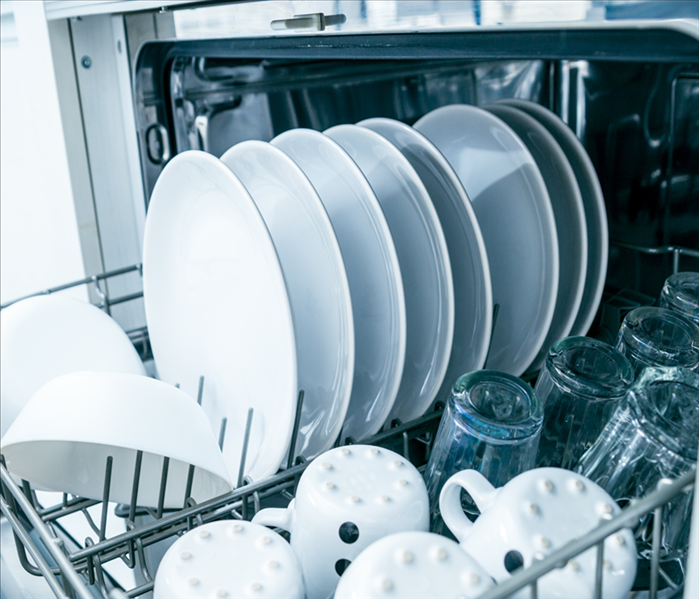 When your dishwasher fails to drain, it can cause a huge mess in your Green Lake, WA home or business.
When your dishwasher fails to drain, it can cause a huge mess in your Green Lake, WA home or business.
How to Fix a Clogged Dishwasher
Dishwashers save us so much time, energy, and money compared to hand-washing dishes. That's why when they stop working properly, we are often majorly inconvenienced. There could be a number of reasons your dishwasher seems clogged or it won’t drain.
Clogged Drain Hise
Check the drain hose. If there is a clog in your drain hose, it will prevent water from draining out of your dishwasher. To check for this problem, remove the lower panel from your dishwasher door and look for items such as food scraps or hair that may be clogging up the hose. You'll need to remove these items before starting to clean or replace the drain hose if needed.
Clean out any debris in the bottom of your dishwasher with hot water and soap (or vinegar). If you've got some nasty stuff caked onto that tub, this should take care of it. Be careful not to use too much force while cleaning though: you don't want to damage any components so keep scrubbing with gentle pressure only! You will want to replace parts if necessary (such as removing old hoses).
Clogged Drain Pump
If your dishwasher is not draining and you have checked the drain hose, check the drain pump. Remove the lower panel and clean out any debris around the pump. If you find no blockages or obstructions in this area, check for stuck impellers by following these steps:
- Disconnect power to your dishwasher (unplug it).
- Remove the upper rack from the inside of the dishwasher tub.
- Use an Allen wrench to loosen the screws holding the motor assembly together - remove the motor assembly from the inside of the tub by lifting up on the top edge of the motor assembly. If you cannot easily lift it off, try disconnecting the electrical wire harness first so that it will move more freely when raised up out of place.
- Check impeller blades for damage or debris build-up that may impede water flow through the pump. If there appears to be no damage or blockage, reinstall the motor assembly back into its original position by reversing the order above.
Call a Plumber
When you can’t figure it out, or don’t want to, call in an expert! A Plumber should be able to help you figure out what’s wrong, and help you get your dishwasher back to normal again.
When your dishwasher fails to drain, it can cause a huge mess in your Green Lake, WA home or business. In these situations, you will want to have a professional come and clean up the water as well as ensure there is no water damage to the areas surrounding the dishwasher. Call SERVPRO of Seattle Northwest to get your Seattle home back to normal after a dishwasher failure.
Replacing Your Bathroom’s Supply Line May Prevent Water Damage
7/28/2022 (Permalink)
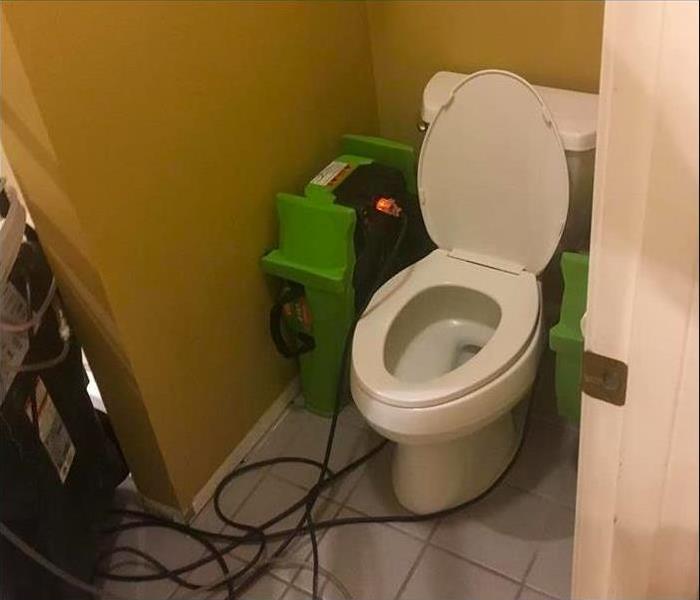 Our team is highly trained in water loss and we carry the equipment to handle any size loss.
Our team is highly trained in water loss and we carry the equipment to handle any size loss.
A bathroom leak can be caused by many different problems, but a common one you may not think about is the water supply line. Over time, the mineral buildup may occur inside the lines or the materials may degrade with age. Many people in Seattle, WA are not aware that supply line damage can be the source of minor or even larger water leaks. You should periodically inspect your supply line, but how often should it be replaced?
Know When To Replace a Bathroom Water Supply Line
•If you find corrosion or pitting in stainless steel lines
•If plastic supply lines become brittle or cracked
•If the tubing is wet, even without obvious evidence of damage
Stainless steel tubing, on average, has a lifetime warranty. However, there are things that can cause failure in the tubing, leaving you with supply line damage. In particular, the effects of chlorine can be very destructive to braided stainless steel tubing. This means you should avoid using cleaning products that contain chlorine on the supply line. In addition, corrosion can take place just from being exposed to the fumes from chlorinated products.
Plastic tubing, on the other hand, can become brittle over time and may need to be replaced every five to eight years for optimum performance. It is flexible and sturdy and can do a good job as well. So when should you replace either type of line? You should inspect your supply lines every year or so whether you notice leakage or not. If you buy a used home, replace all of the supply lines, and have the home inspected carefully for a bathroom leak or a shower pan leak.
If a bathroom leak or flood damage is found, on its own or in addition to supply line damage, trained home restoration experts in Seattle, WA can assess the damage and help you learn the best way to return the home to safe and sound condition. Take stock of these items in your own home to keep things running peacefully and in good order.
Is Your Water Bill Higher Because of a Leak?
6/22/2022 (Permalink)
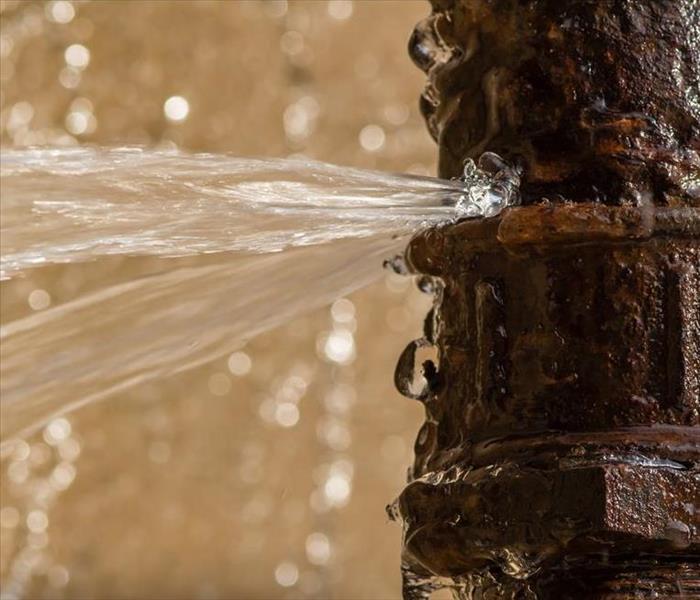 A pipe burst can create more extensive repair en cleanup services in your Greenlake, WA home or commercial property.
A pipe burst can create more extensive repair en cleanup services in your Greenlake, WA home or commercial property.
Is Your Water Bill Going Up As A Result Of A Leak?
An abnormally high water bill for your commercial building can be perplexing. You might wonder where the extra expense is coming from, and you will want to correct the issue as soon as possible.
If you have no reason to believe that your building has been using significantly more water for business operations, it is possible that you have a water leak somewhere in the pipe system.
Here are several steps to take when dealing with potential leaks.
1. Determine the Likely Sources of the Water Leak
There are many possible sources of leaks in commercial buildings. Has your building had plumbing issues in the past? If so, it may be a good idea to look for signs of a plumbing leak. Check the building for stains, bulging walls, unstable floors, or loose tiles.
Many commercial buildings have water leak sensors installed in the piping systems. These sensors can help you pinpoint the source of the leak.
2. Check Your Insurance Plan
Leaks are often covered under commercial property insurance plans. However, different plans may have different exclusions, and it is important to get familiar with the details of the plan as you begin negotiations with the insurance company.
3. Call a Disaster Cleanup Company for Large Leaks
In more severe cases, a pipe break could create a large leak that will require more extensive repair and cleanup services. Repairing the pipe is just the first step; you must also make sure that the surrounding areas are free from mold and water damage. A professional water restoration company in Greenlake, WA, can help you make sure that the damage from a large leak is contained and mitigated so that your business operations can move forward smoothly.
A high water bill may be frustrating, but taking these steps can help you address the underlying problem quickly and effectively.
How To Stop a Toilet From Flushing
6/14/2022 (Permalink)
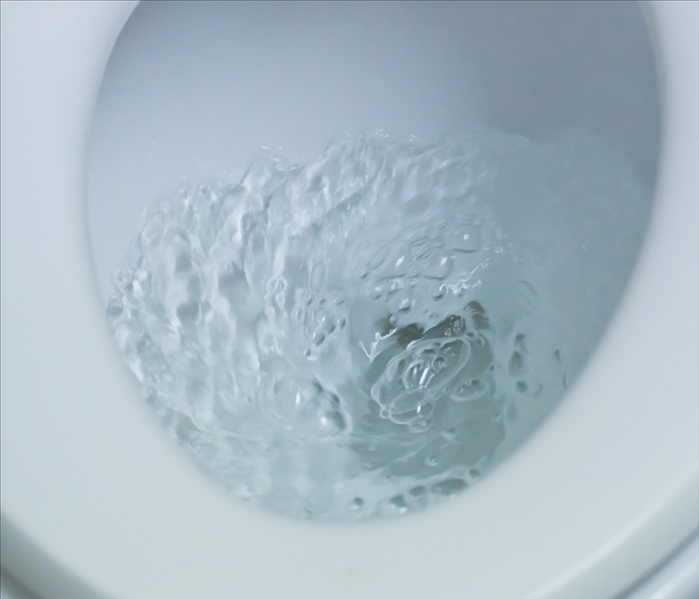 A toilet overflow can be a problem in any commercial building.
A toilet overflow can be a problem in any commercial building.
How to Prevent Toilet Flushing
A toilet overflow can be a problem in any commercial building. What do you do when a toilet will not stop flushing? There are several things you can do to address the issue.
1. Determine the Flushometer Type
Flushometers are the devices that cause commercial toilets to flush. Some are manual but many are now automatic. The correct solution to a toilet flood may depend on the type of flushometer that the toilet uses.
2. Shut Off the Water to Prevent Toilet Overflow
On one side of the flushometer, there should be a slot for a flathead screwdriver. Using a screwdriver at this spot allows you to turn the water off.
3. Remove the Flushometer's Lid (Manual)
For a toilet with a manual flushometer, use a wrench to loosen the lid at the top. Once the lid has been loosened, you will be able to screw it off. Remove the flange as well, and do not be alarmed if small amounts of water spray from it.
4. Clean the Gasket (Manual)
After you remove the flange, you will be able to see the gasket. Remove the gasket and clean it thoroughly. Use something small and precise to help you clean the weep hole. After you clean the gasket and weep hole, put everything back together following the previous steps. If there is still toilet overflow, you may need to replace the gasket entirely.
For commercial toilets with automatic flushometers, you can shut off the water using the same screwdriver technique that you would use on a manual flushometer. You may need a plumber to help you determine whether you need to replace the diaphragm kit or service the solenoid.
You can follow these steps to stop a toilet from flushing. If your building experiences water damage, it is a good idea to look for water restoration services in Ballard, WA, as soon as possible.
How Small Water Leaks Can Cause Big Problems
6/8/2022 (Permalink)
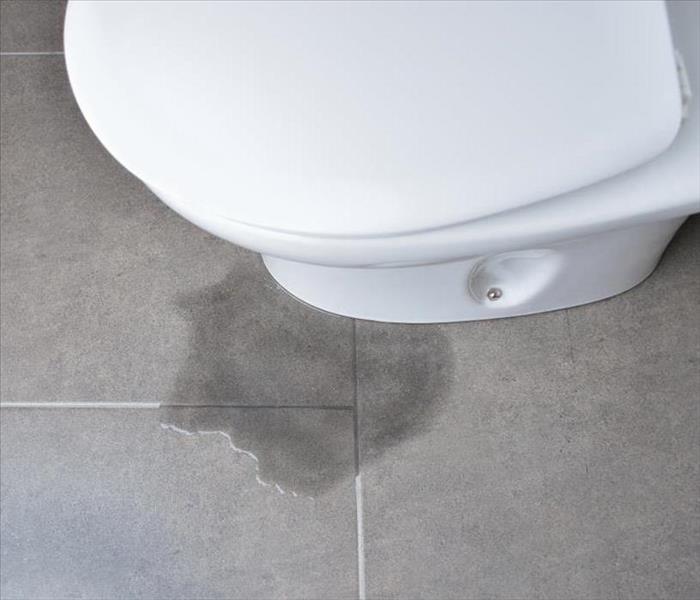 If you suspect a leak in your toilet, contact a plumber to remove the toilet and see if they need to replace the flooring and subfloor around it
If you suspect a leak in your toilet, contact a plumber to remove the toilet and see if they need to replace the flooring and subfloor around it
How Small Water Leaks Can Create Major Issues
If you've noticed that your water bill has gone up in the last few months and your Seattle, WA, company's water usage hasn't, you want to look for a water leak. Even a tiny leak can cause a tremendous amount of damage when left alone for long enough. Here are some ways water leaks can cause a lot of damage.
Small Pipe Break
It's natural for pipes to wear down over time, so you want to ensure you have a plumbing company regularly evaluate your entire system. If you're worried you have a leak in a pipe in your walls, look for:
- Bubbling and discolored drywall
- Patches of mold on the wall
- Musty smell in the room
When you start to see signs of a pipe leak, you'll want to immediately call a plumber to address the problem. If the water leak has been happening long enough, you might need a water damage repair company to correct the issue.
Leaking Toilet
You could have a leaking toilet and not know it for years. The wax seal on your toilet often begins to wear away and lets small amounts of water slip out around the toilet's base. You will notice a problem when the floor feels soft around the toilet or you are constantly cleaning mold around the bottom of the toilet. If you suspect a leak in your toilet, contact a plumber to remove the toilet and see if they need to replace the flooring and subfloor around it.
Dripping Sink
A sink has multiple places it could leak from and cause problems. The faucet or handles could slowly leak and leach water into the countertops. Or, the water supply line or pipes could drip, destroying the cabinet the sink sits in. If you notice standing water under the cabinet or spongy, soft countertops, contact a professional to address the problem.
A water leak can be a pain to deal with and can cause a lot of damage. However, when you know what signs to look for and rely on the professionals, you'll find that things are much easier to handle.
Types of Water Damage Coverage
1/12/2022 (Permalink)
 Most commercial insurance policies explicitly do not cover the sort of catastrophic flood event that results from extreme rainfall, tidal waves, etc.
Most commercial insurance policies explicitly do not cover the sort of catastrophic flood event that results from extreme rainfall, tidal waves, etc.
Water Damage Insurance: What It Is and What It Isn't
Do you know when water damage to your business is covered by your existing insurance policy? Read on to better understand how to approach damaged pipes and other plumbing problems.
1. Floods or Leaks?
While most commercial insurance policies explicitly do not cover the sort of catastrophic flood event that results from extreme rainfall, tidal waves, or overflowing rivers, many other types of water damage are still covered by default plans. For example, leaking pipes and the damage they cause to the surrounding area are usually covered. As long as all issues are correctly documented and ascertained by your adjuster, your insurer will likely pay for a qualified professional water damage restoration service to bring your property back to its original condition.
2. Burden of Maintenance
However, under most default packages, your business damage will not be insured against flooding resulting from negligence. Broadly speaking, these cases usually come down to a lack of preventative maintenance. For example, if a few damaged pipes were noticeably leaking for more than a couple of weeks, it is no longer considered an unpreventable accident. In such cases, the business owner will be liable for all damages, since the flood did not result from a sudden event.
3. Other Exceptions
Coverage for fire suppression systems, such as water-based overhead sprinklers or powder-based devices, is usually more extensive than for the basic plumbing. This is because these systems are necessary for the buildings to be compliant with fire codes and because water does not move through these pipes regularly. While it is important to maintain your fire sprinklers in Greenlake, WA, for safety and legal reasons, it is unlikely that you need an additional insurance coverage package to cover them. Mold damage resulting from moisture retained in the walls or floors is usually not covered, as this is a side effect from a more fundamental plumbing problem.
Don’t allow damaged pipes and other plumbing issues to linger and incur unnecessary costs. Prevent downtime by actively pursuing the appropriate maintenance remedies outlined above.
Factors Required To Save a Carpet After a Flood
12/16/2021 (Permalink)
 When it comes to water removal and mitigation, you can always count on our SERVPRO team!
When it comes to water removal and mitigation, you can always count on our SERVPRO team!
Factors To Consider When Trying To Save A Carpet After A Flood
Any time your home in Greenlake, WA, floods, whether from a storm or a pipe break, your carpet is in danger of being compromised. The fibers tend to hold on to dirt and water, which can make restoration difficult and secondary damage likely. That doesn’t automatically mean you have to spring for new flooring, though. If the right conditions exist, you may be able to salvage it, cutting down on your repair costs.
What Kind of Water Caused the Flood?
The cleanliness of the water is the main factor that determines whether items in the room can be salvaged. When it comes to floodwater, there are three categories of contamination:
- Category 1 – Clean water, usually from a faulty supply line or pipe break
- Category 2 – Gray water, usually from an appliance overflow
- Category 3 – Black water, usually from storm flooding or sewer water
If the water’s contamination level falls under Category 2 or 3, your carpet needs to be replaced. The water is likely to contain harmful bacteria that would be difficult, if not impossible, to remove during the restoration process. If, however, it is clean water, a thorough drying should suffice.
How Long Has It Been Wet?
Another issue water remediation specialists consider when deciding if materials should be replaced is the length of time it has been saturated. If you call the professionals as soon as the flood occurs, they are likely to get to the problem in time to salvage as much as possible. Mold loves moisture, and it can start to grow as soon as 24 hours after water damage occurs. The longer you wait, the more you’re going to have to replace as the result of secondary damage.
If you have a pipe break in your home and your floors are flooded, call in the experts quickly. The sooner they fix the problem, the higher the probability that you can keep your carpet.
How Much Does Water Restoration Cost?
11/19/2021 (Permalink)
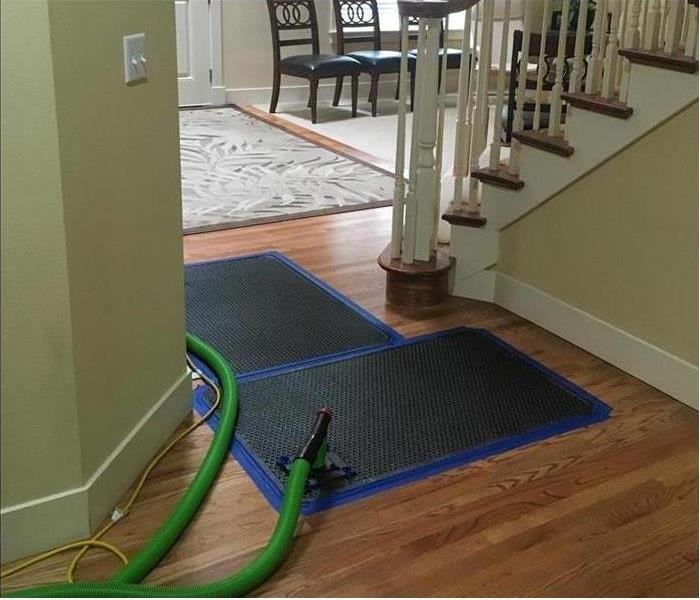 Our SERVPRO of Seattle Northwest team frequently uses these floormats to dry flooring affected by water damage.
Our SERVPRO of Seattle Northwest team frequently uses these floormats to dry flooring affected by water damage.
What Is the Price of Water Restoration?
Water damage repair at your home in Seattle, WA, can cost you time, energy and money. How much does the process cost monetarily from start to finish? The short answer is that it depends.
What Are the Factors Involved in Pricing?
When it comes to water damage, the average flood repair in the United States runs homeowners about $2,700. However, this figure fluctuates depending on a variety of factors.
• The amount of damage in need of repair has a significant impact on cost. Typically, if drywall and carpeting are involved the average restoration cost rises to approximately $7,500.
• Type of water can also a key contributor to cost. Clean water from sources such as pipes or rain can cost roughly $3.75 per square foot. Black, or contaminated water from sewage, is around $7 per square foot.
• The speed of remediation is often important because the longer you wait to start removing water, the more secondary damage can occur. This can increase the potential cost.
• Location often plays a role in terms of labor cost. For example, New York and Chicago are two of the more expensive restoration areas.
Why Hire a Water Restoration Specialist?
Even though it may seem more expensive to hire a restoration professional for damage repair, it can save you time and money in the long run. Not all water damage is visible or obvious to homeowners. There may be hidden moisture that can cause mold and become a financial burden later. Specialists use equipment, such as infrared cameras, to remediate moisture and prevent secondary damage.
The average flood often requires specialized gear and techniques. Depending on your unique situation experts can use a variety of methods and tools for removing excess basement water, drying, cleaning, disinfecting and restoring your home and contents.
Whether you have a small amount of flooding from clean water or a significant amount from black water flooding at your home in Seattle, WA, it can be crucial to initiate water damage repair as soon as possible. Immediate, professional help can save you time and money in the long run.
Do All Building Materials Need to be Replaced Following a Flood?
10/4/2021 (Permalink)
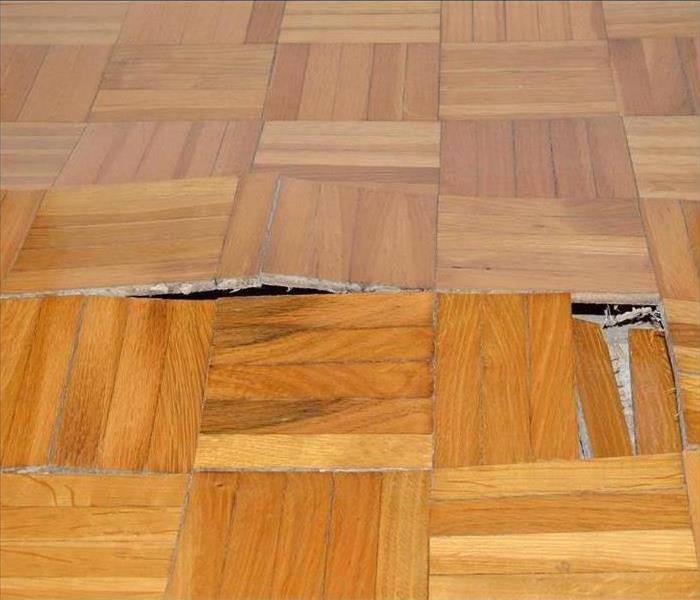 Swelling wood floor in North Beach, WA
Swelling wood floor in North Beach, WA
Life can be good in North Beach, WA, so a flood is likely the last thing on your mind and certainly the last thing you want to deal with. In the event of a household flood due to a leaking supply line or broken pipe, you may wonder what to do and whether the home’s structure can be saved. Facing the prospect of swelling wood and water pipe repair can be intimidating and worrisome, but not all building materials need to be disposed of or replaced.
How Water Affects Building Materials
Whether structural materials are hopelessly damaged, depends on how fully, and for how long they were exposed to water. The following is what happens to various building materials.
Wooden studs - Swelling wood occurs when exposed to water, particularly if submerged
Subfloor - Absorbs water and may not only swell but may also begin to disintegrate
Sheet rock - May possibly be saved upon drying out, provided the source was clean water
Insulation - Absorbs and wicks moisture and may not dry out well
The Possibility of Mold
In addition to water damage, mold may take hold in any materials that are not dried out quickly. Drying is a critical stage of the cleanup and it may require the services of water mitigation and restoration professionals in North Beach, WA, who can bring industrial fans, if needed. They can also assess the need for replacement or the possibility of repair of various materials. Those exposed to clean water may possibly be dried out and reused, but those which have an overgrowth of mold may need to be disposed of.
As you can see, when a flood comes from a supply line or other clean water source
Chances are fair that the building materials might be saved. Once the water pipe repair and swelling wood are all resolved, you can breathe a sigh of relief as your family resumes its normal routine.
What Lies Beneath the Toilet? Mystery Revealed!
7/7/2021 (Permalink)
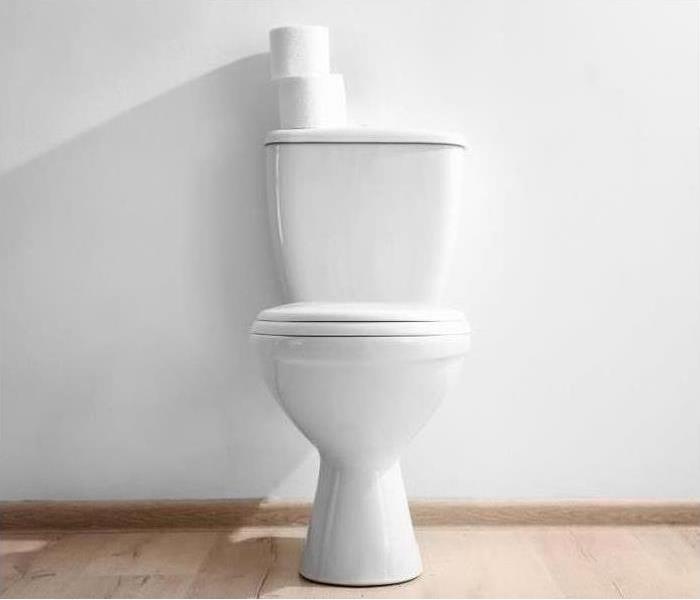 Are you surprised that there are just two simple parts under the porcelain?
Are you surprised that there are just two simple parts under the porcelain?
What Lies Beneath the Toilet?
On most days, you don’t care how your toilet works, you’re just glad it magically whooshes waste to a land, far, far away, until the day it doesn’t. Today, you notice a leaking toilet and from the look of the floor, it may have been leaking for a while. It’s time to learn what secrets lie beneath the porcelain in Seattle, WA.
Mystery Revealed
Don’t worry, a toilet is simple. You are familiar with the tank and the supply valve, but you may not have experienced the mystery from under the toilet. Here is the big reveal, which comes down to two features:
• Wax Seal. This ring-shaped seal is usually made of wax and, usually, is the reason for the leaking toilet. Sometimes a bad seal is due to improper installation, but it also just happens over time and wear. No matter what you learn about the next part, you will definitely need to scrape off the old wax and replace it.
• Closet Flange. This is a piece of metal or plastic that connects the toilet to the exit drain and the floor. Here is where things could get complicated with problems like improperly tightened bolts, a broken flange, or a flange that sits below the surface of the floor. You will need to resolve any problem with the flange before replacing the seal.
The good news and bad news are the same: there many different materials for flanges and many ways to solve problems with this critical component. Your objective is to stop the leaking toilet by making a good seal and to making sure your flange is never lower than your flooring.
It’s Not Complicated
Unfortunately, the mess of a bathroom leak is usually the first sign you see and that means you have some additional cleanup to do. Water damage repair specialists can help assess the situation to determine the best way to proceed to reduce your risk of secondary damage.
How To Handle Water Leaks Near Light Fixtures in 3 Steps
6/30/2021 (Permalink)
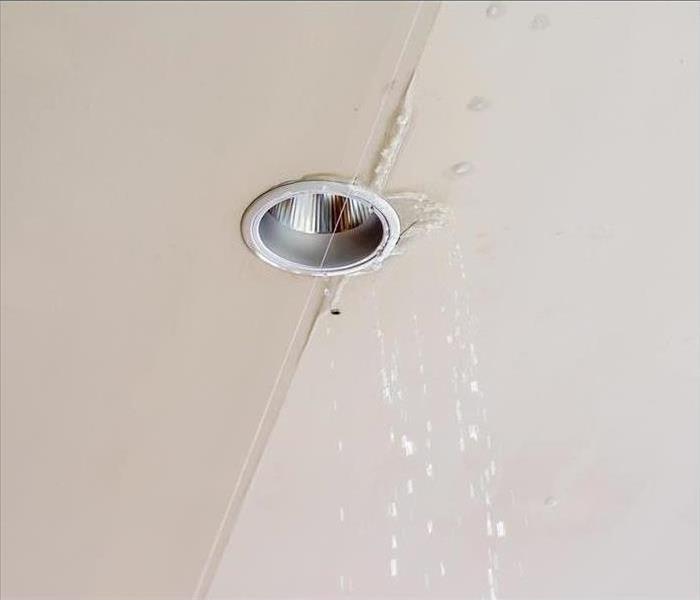 The presence of water in light fixtures is especially dangerous.
The presence of water in light fixtures is especially dangerous.
3 Easy Steps You Can Take To Control This Scenario
Water leaks are always concerning, as they can greatly damage your North Beach, WA, home and property. The presence of water in light fixtures is especially dangerous since water and electricity together can harm you. You will need to handle these situations carefully.
1. Shut Down Electricity
Before conducting repair efforts, it is important to disable the danger of electricity immediately. If it is safe to do so, head straight to your house's service panel and shut down the main source of power. Even if the damage is limited to one specific area, it is better to turn off all power until the area is secure. Test the lack of electricity by using a non-contact voltage tester on a dry appliance.
2. Turn Off the Water Valve
Another important step in mitigating the situation is cutting off the main supply if the water in the light fixtures comes from a leaking pipe. Water, alongside any chemicals in the water, can conduct electricity and endanger anyone in the area. Look above to detect any water drops, ceiling damage, mold or other signs of a plumbing failure. You will need to locate your house's main water valve and shut it down immediately.
3. Call the Appropriate Professionals
Now that the affected appliances and locations are free of danger, it is time to call the professionals who can resolve the problem. If there are broken pipes, a plumber can repair the system and stop further damage. Call an electrician to fix the light fixture or device in question and to ensure it is the right time to bring back power. After that, an emergency remediation specialist can help restore your home to its former state.
Water damage can harm you and your loved ones and further destroy your home, especially when it comes to water in light fixtures and other electronic devices. Take the proper steps to minimize the hazards and keep your household safe.
Furnace Floods Should Get Immediate Attention
6/18/2021 (Permalink)
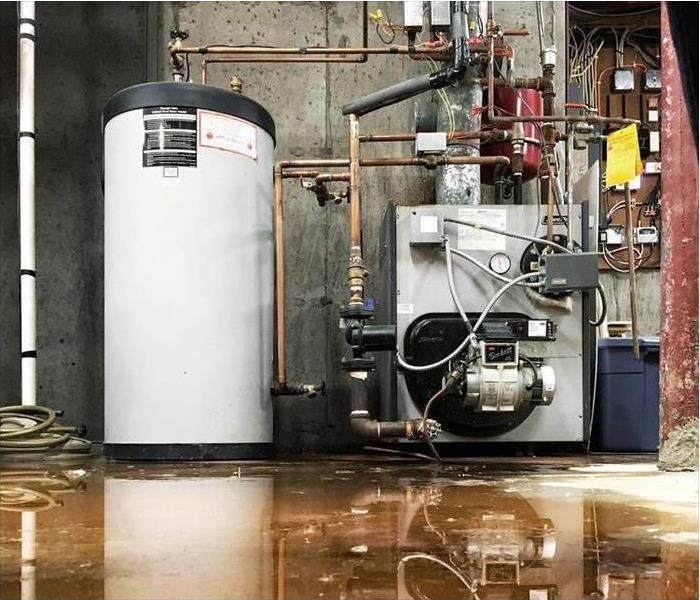 Furnace flood in Haller Beach, WA.
Furnace flood in Haller Beach, WA.
Furnace Floods Should Get Immediate Attention
You walked into work prepared for a busy day. You weren't necessarily ready, though, to handle the magnitude of a furnace flood. Overnight, a pipe burst, leaving you with a very wet, soggy mess of carpet and drywall. Now, unfortunately, you stand staring at a river in your basement, facing the task of trying to fix it. Is this a major problem? Yes, it really is. It's not a time to procrastinate or attempt a do-it-yourself method. Without a doubt, business owners dealing with this strife should seek assistance as soon as possible.
1. How Do I Know if the Furnace Is Okay?
Side on caution anytime water comes near a flooded furnace. It is a severe hazard. If water entered anywhere near the circuits or gears, an electrical fire could start. To ensure this doesn't happen, contact a water restoration company in Haller Beach, WA. The team can assess the damage, determining the best methods for cleanup. While you wait, shut off gas and electric to the area; then, remain elsewhere.
2. Does It Require Replacement?
Because a furnace flood poses a danger to the overall building, most often business owners may be asked to change out the unit. Bear in mind that water can seep into crevices, possibly rusting the interior of the device. If that happens, simply replacing circuitry or valves is not enough. For peace of mind, it's often best to get rid of the furnace and pick up something new.
3. What Other Precautionary Steps Are Needed?
It's possible moisture and microbes made it into the duct system. For this reason, don't neglect air duct cleaning. Your crew can ensure that the system is not only dried out but free of mold and particles.
When a furnace flood occurs, call in specialists to evaluate the severity of the situation. Using their background knowledge, they'll prepare a remediation plan and get to work, putting your establishment back together again.
4 Things Landlords Can Do To Reduce Plumbing Maintenance Costs
6/1/2021 (Permalink)
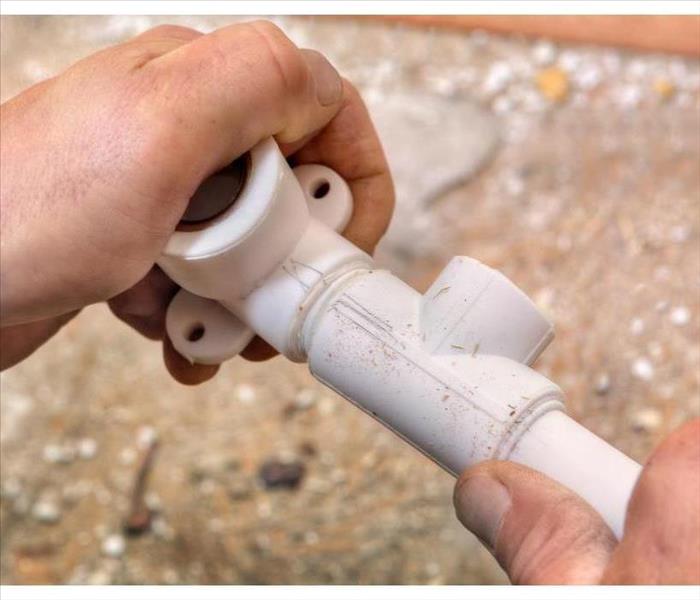 Your polybutylene pipes require basic monthly maintenance and special treatment.
Your polybutylene pipes require basic monthly maintenance and special treatment.
4 Things Landlords Can Do To Reduce Plumbing Maintenance Costs
Landlords are responsible for maintaining the plumbing in their rental units. Fortunately, they can do a few things to reduce the total cost they pay for maintenance and repairs.
1. Regular Maintenance
Landlords are required to provide a property that is livable throughout the entire stay of their tenants. One of the best ways to fulfill this responsibility and lower the chances you will have to pay for a water remediation company in Fremont, WA, is to perform regular maintenance. This means ensuring that even your oldest polybutylene pipes receive regular treatments. Additionally, it also means taking measures to prevent clogs and other plumbing issues.
2. Check Working Condition
One way to check the working condition of polybutylene pipes is to have an inspection conducted. Regularly doing this will alert you to any small clogs and weak spots in your pipes that need to be fixed before they worsen.
3. Check Tenant’s Behavior
Your polybutylene pipes require basic monthly maintenance and special treatment. Therefore, you want to make sure that your tenants don't put fats, grease, and other oily substances down the drain that can trap hair, soap scum, and food particles and cause plumbing issues. This includes not only sink and shower drains but the toilet and laundry pipes as well.
4. Transfer Risk to Another Party
Regular maintenance can reduce your chances of plumbing issues, but it cannot eliminate the threat. Earthquakes, tree roots, and misuse can still be sources of problems, so you should take measures to transfer the risk to other parties. This means getting a proper insurance policy for problems outside of your control and having a plumbing clause in your lease that requires your tenants to take responsibility for their actions.
As a landlord, you are responsible for the plumbing maintenance in your units. To lower these costs, you should take action to prevent excessive water damage and limit your liability.
Water Damage Timeline
3/16/2021 (Permalink)
Flooding and water emergencies don’t wait for regular business hours and neither do we. SERVPRO of Seattle Northwest provides emergency cleaning and restoration services 24 hours a day, 7 days a week—including all holidays.
Faster to Any Size Disaster
Flooding and water damage is very invasive. Water quickly spreads throughout your home and gets absorbed into floors, walls, furniture, and more. SERVPRO of SERVPRO of Seattle Northwest arrives quickly and starts the water extraction process almost immediately. This immediate response helps to minimize the damage and the cleaning and restoration costs.
Need Emergency Service? Call Us 24/7 – 206-542-1226
Water Damage Timeline
Within Minutes
· Water quickly spreads throughout your property, saturating everything in its path.
· Water is absorbed into walls, floors, upholstery, and belongings.
· Furniture finishes may bleed, causing permanent staining on carpets.
· Photographs, books, and other paper goods start to swell and warp.
Hours 1 - 24:
· Drywall begins to swell and break down.
· Metal surfaces begin to tarnish.
· Furniture begins to swell and crack.
· Dyes and inks from cloth and paper goods spread and stain.
· A musty odor appears.
48 Hours to 1 Week:
· Mold and mildew may grow and spread.
· Doors, windows, and studs swell and warp.
· Metal begins to rust and corrode.
· Furniture warps and shows signs of mold.
· Paint begins to blister.
· Wood flooring swells and warps.
· Serious biohazard contamination is possible.
More Than 1 Week:
· Restoration time and cost increase dramatically; replacing contaminated materials and structural rebuilding may be extensive.
· Structural safety, mold growth, and biohazard contaminants pose serious risks to occupants.
About SERVPRO of Seattle Northwest
SERVPRO of Seattle Northwest specializes in the cleanup and restoration of residential and commercial property after a fire, smoke or water damage event. Our staff is highly trained in property damage restoration. From initial and ongoing training at SERVPRO’s corporate training facility to regular IICRC-industry certification, rest assured our staff is equipped with the knowledge to restore your Seattle property.
4 Steps To Pump Water Out of a Basement
3/9/2021 (Permalink)
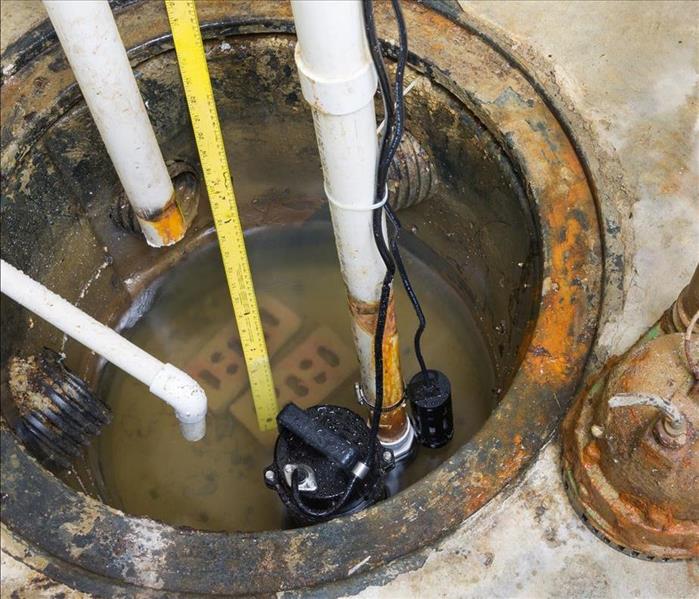 A flooded basement is a problem that you need to remedy quickly.
A flooded basement is a problem that you need to remedy quickly.
4 Steps To Pump Water Out of a Basement
Whether you are the victim of a storm or broken pipe, a basement flood is always a source of trouble. Once the source is remedied, you need to pump out the water quickly. While you can hire a water remediation company to do this task, it could take a few days before they reach you if the flooding is widespread. The good news is you can do this task by yourself. While it is not very difficult, there are a few steps you need to follow to do it correctly.
1. Ready the Area
Wait until the source is remedied. If there is standing water around your home in Seattle, WA, don't start pumping yet. When it's time to pump, make sure you turn the electricity off. Be sure to remove children and pets from the basement as well.
2. Pump Out the Water
If your basement flood is severe, lower a sump pump into the deepest part with a rope. If you only have a few inches of water, don rubber boots and place the pump in the deepest spot. Once you set the pump up, plug it into a generator. It should start pumping water out immediately. You can speed up the process by using multiple pumps. After the water level starts to dwindle, turn off the pumps.
3. Shop-Vac Small Puddles
When the basement flood has been reduced to less than an inch, use a shop-vac to clear up the puddles. These machines suck up the water and pump it into a four- or five-gallon tank. When the tank is filled, you carry it outside and dump it out. Therefore, you want to wait until the water level is low to use this tool.
4. Dry Out Porous Items
If the source is listed under your homeowner's policy, your insurance coverage will pay to replace your porous items. This includes drywall and carpeting. Another option is to hire a company to dry the items.
A flooded basement is a problem that you need to remedy quickly. Follow these steps to pump all of the water out of your basement.
An Unnoticed Water Leak Could Cost Your Business Thousands
1/27/2020 (Permalink)
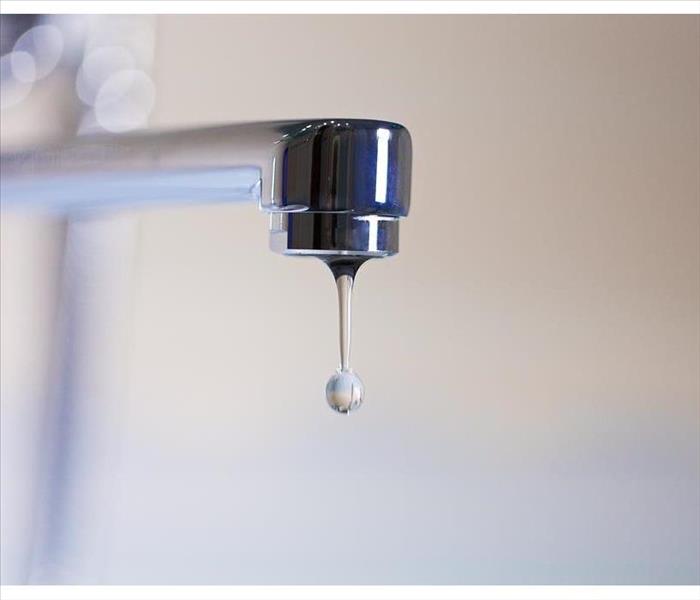 Even a small drip can lead to a large loss of water over time
Even a small drip can lead to a large loss of water over time
An Unnoticed Water Leak Could Cost Your Business Thousands
Every year many businesses are affected by water leaks that have long gone unnoticed. A leak can not only cause a significant amount of damage to your building and its contents, but it can also skyrocket your water bill. The drip … drip … drip of a water leak seems harmless enough, but multiply those drips and they can become a giant problem. It’s a good idea to regularly inspect and identify spots where water leaks are most likely to occur.
1. Leaky Toilets
Commercial buildings typically have several toilets. You can see and hear many toilet leaks, but sometimes they aren’t visible or audible. In most cases, a sure indicator would be your water meter, but toilet leaks tend to be slow. If you can determine that your water use has dramatically risen, a malfunctioning toilet isn’t probably the culprit.
2. Leaky Faucets
Even a small drip can lead to a large loss of water over time. If you have one faucet that drips one drop per second, approximately five gallons of water would be wasted every day. That’s over 2,000 gallons each year. Fortunately, most leaky faucets are easy to repair and usually involve the replacement of washers.
3. Leaky Underground Pipes
If water main pipes spring a leak on your side of the meter, you'll be responsible for paying the bill. The water bill may be the only indication that there’s a water leak. You won’t know that there’s a possibly even a pipe break until you receive your monthly water bill unless you monitor your water consumption weekly. Talk to your provider and see what they can do in terms of weekly monitoring until the problem is resolved.
4. Leaky Plumbing
Pipes are located throughout buildings. So, leaks can occur behind walls, above ceilings, and under flooring. Sometimes the only way you realize that there’s a leak is noticing wet drywall, discolored ceiling tiles, mold or smelling a musty odor.
If your Haller Beach, WA, commercial building sustains water damage from a water leak, be sure to hire restoration professionals. They'll return it to its preloss condition as soon as possible.
3 Steps for Minimizing Flood Damage After a Kitchen Sink Leak
12/11/2019 (Permalink)
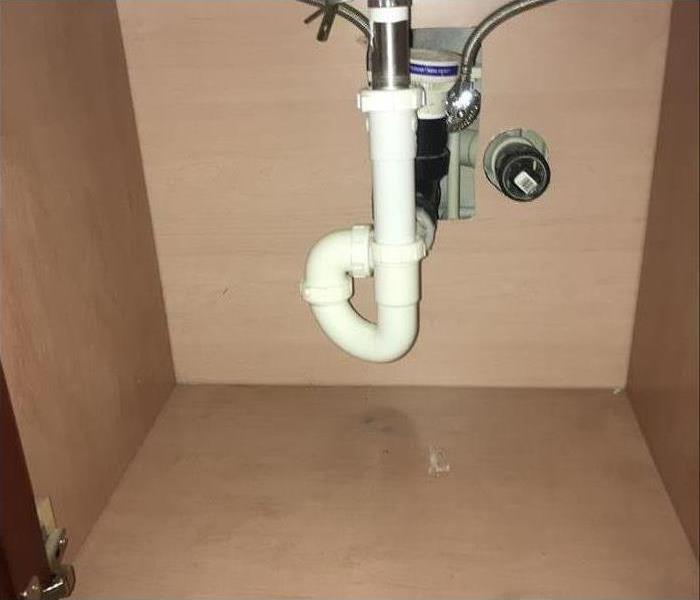 Kitchen sink leak in Broadview, WA
Kitchen sink leak in Broadview, WA
Three Basic Steps When Dealing With Water Cleanup After a Kitchen Sink Leak
If you have experienced flooding in your kitchen due to a leaky sink, you should act quickly to minimize further water damage. The longer you ignore a water issue, the more destruction that is likely to result. Follow these three basic steps when dealing with water cleanup after your kitchen sink leaks.
Turn Off the Water Supply
Once you realize you have a leak, the first step is to shut off the supply of water. Locate the shut-off valve for the sink. This is usually located in the cabinet below the sink. Some sinks have two valves; one valve is for hot water, the other is for cold. Turn both valves clockwise until the water supply is blocked off. When shutting off the water to your kitchen sink, keep the following in mind:
Always Close Valves By Hand
Turning your water on or off with pliers or other tools can overtighten and damage the valve.
If your kitchen sink does not have a local shut-off valve built into the pipe, water can always be shut off at your home's main water line.
Contact Your Insurance Provider
Now that the water in the home is safely turned off, you should get in touch with your insurance provider. Whether you have homeowner’s insurance or renter’s insurance, reporting a flooding incident right away is critical for filing a successful claim. You may be asked to submit pictures or a written statement about the incident to receive funds for repairs.
Work With a Restoration Crew
As you wait out the process of filing an insurance claim, don't hesitate to move forward with hiring a local flood damage restoration crew in Broadview, WA. Your kitchen repair should begin with a full sanitation and evaluation of the area. The cleanup team will ensure the safe removal and restoration of items ruined by water. Be sure to act promptly in order to minimize damage caused by flooding.
How and Why To Flush Your Water Heater
10/16/2019 (Permalink)
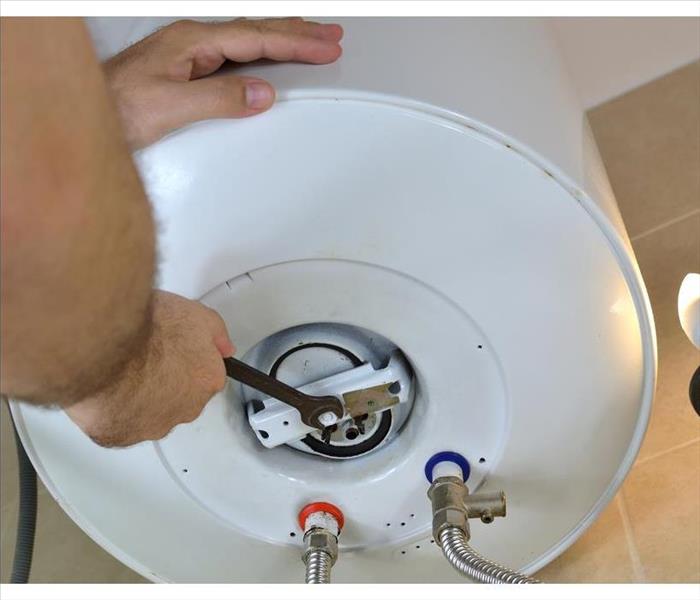 Flushing a water heater in Wallingford, WA
Flushing a water heater in Wallingford, WA
As a homeowner in Wallingford, WA, you can save a lot of time and money on water damage repair simply by practicing preventative maintenance on some of your vital systems. Hot water is something that nobody wants to go without, so don't leave your hot water heaters out. All it needs is a flush every now and then to clear the sediments out of the tank.
Preparation
To prepare for your water heater flush, you'll want to begin by gathering some supplies. You don't need much, and you should already have everything required around the house:
- Work gloves
- Garden Hose
- Screwdriver
After putting on your gloves, turn off the heater itself. Then you can attach the hose to the drain valve. Make sure to place the other end of the hose near a drain or somewhere that you don't mind water and sediment accumulating, like outside.
Draining
Next, open the drain valve and let the water run for a few minutes. To help the water along, turn on the hot water faucet in your kitchen. After another couple minutes, turn off the water supply valve until the flow of water stops. To be thorough and give it one more rinse, turn on the water supply valve one more time for a couple of minutes, and turn it off again.
Filling
Now that everything is flushed out of the heater, you can fill it back up again. Close the drain valve and turn the water supply line back on. Keep an eye on the faucet in the kitchen. You'll know the tank is full when the water coming out of the faucet is smooth and steady- that means all the air has been pushed out. Once the tank is full, you can turn the heater back on. Don't forget to turn off the faucet at the end!
You water heater is an important part of your home. To give it a good, long life you should flush it out regularly to avoid damage or malfunctions, or total replacement. It isn't hard to integrate regular flushing into your home maintenance routine.
 When your dishwasher fails to drain, it can cause a huge mess in your Green Lake, WA home or business.
When your dishwasher fails to drain, it can cause a huge mess in your Green Lake, WA home or business.




 24/7 Emergency Service
24/7 Emergency Service















